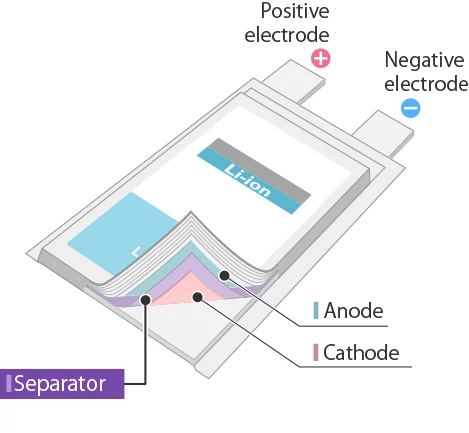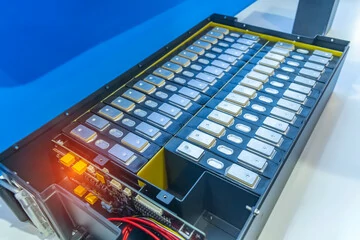Voltage Monitoring Unit in BMS
main content
The Voltage Monitoring Unit (VMU) is a cornerstone of a lithium motorcycle battery’s Battery Management System (BMS), ensuring precise measurement and protection of individual cell voltages. This article explores the VMU’s components and their roles in optimizing battery safety, longevity, and performance under demanding conditions.
Core Components of the Voltage Monitoring Unit
1.High-Precision Voltage Sensors
Voltage sensors are the primary interface for real-time cell voltage measurement. These sensors, often thin-film resistors or integrated analog front-end (AFE) chips, detect voltage fluctuations across each cell with accuracy as high as ±1–3mV. This precision is critical for preventing overcharging or deep discharge, which can degrade battery health or cause safety hazards like thermal runaway.
2.Analog-to-Digital Converters (ADCs)
Raw voltage data from sensors are converted into digital signals using high-resolution ADCs. Advanced ADCs with 12- to 16-bit resolution and ±10mV accuracy ensure reliable data for State of Charge (SOC) calculations and fault detection. For motorcycle batteries operating in extreme temperatures (-40°C to 125°C), low-drift amplifiers maintain signal stability.
3.Cell Balancing Modules
Passive or active balancing circuits address voltage imbalances between cells. Passive systems dissipate excess energy via resistors, while active systems redistribute charge using capacitors or inductors. Balancing ensures uniform cell voltages during charging, maximizing capacity utilization and extending pack lifespan.
4.Microcontroller (MCU) Integration The MCU processes digitized voltage data to execute control algorithms. Arm® Cortex®-M series cores or automotive-grade MCUs analyze trends, trigger balancing, and communicate with other BMS modules. Real-time SOC/SOH estimations and fault alerts rely on this computational backbone.
5.Isolated Communication Interfaces
CAN FD, SPI, or I2C protocols transmit voltage data to external systems like vehicle ECUs. Galvanic isolation layers (e.g., silicon dioxide) prevent electromagnetic interference in high-voltage environments, ensuring signal integrity even in compact motorcycle battery compartments.
Key Functions of the Voltage Monitoring Unit
Overcharge/Over-Discharge Prevention: By continuously tracking cell voltages, the VMU triggers protective actions—such as disconnecting the load or charger—when thresholds are breached.
SOC Estimation: Accurate voltage data feeds algorithms like coulomb counting or Kalman filtering, enabling real-time SOC updates critical for ride planning and battery longevity.
Fault Detection: Voltage anomalies, such as sudden drops or spikes, are flagged as potential short circuits, open circuits, or aging cells, allowing proactive maintenance.
Thermal Management Coordination: Voltage trends correlate with temperature changes, enabling the BMS to adjust cooling or heating systems dynamically.
Why Voltage Monitoring Matters
Safety: Prevents catastrophic failures like thermal runaway by maintaining cells within safe voltage limits.
Efficiency: Balancing reduces energy waste and ensures consistent power delivery during cold starts or high-load scenarios.
Durability: Mitigates cell degradation caused by voltage imbalances, extending battery life by up to 20–30% in harsh riding environments.
Conclusion
The Voltage Monitoring Unit in BMS is indispensable for motorcycle lithium starter batteries, combining precision sensing, intelligent processing, and robust communication. By safeguarding against voltage extremes and optimizing energy distribution, the VMU ensures riders benefit from reliable starts, extended battery life, and uncompromised safety. For manufacturers and enthusiasts alike, understanding this unit underscores the importance of investing in advanced BMS technologies tailored for high-performance two-wheeler applications.

START-STOP LITHIUM battery
Enov start-stop battery is designed to provide excellent performance for high-demand start-stop vaehicles. It adopts the third-generation intelligent lithium platform architecture to achieve technological breakthroughs in core indicators such as cycle life, environmental adaptability and energy density. Compared with the traditional lead-acid battery system, the energy efficiency is increased by 210%, the cycle life is extended by 8-10 times, and the monthly self-discharge rate is controlled within 3%. Enov's unique low-temperature battery technology makes a breakthrough in achieving stable output in the whole climate domain from -30℃ to 65℃, maintaining more than 90% of the effective capacity release under extremely cold conditions (-30℃), and maintaining 90% of the capacity in high temperature environments (65℃).
The start-stop battery series products cover the mainstream voltage platform of 12V/24V/48V, and support flexible configuration of LFP (lithium iron phosphate) and NCM (lithium nickel cobalt manganese oxide) dual-material system. All models adopt modular design to support customization of different model specifications. Enuo engineering and technical team to provide full cycle technical service support, if you need, please contact us.
Other products
UAV BATTERY
LITHIUM ENERGY STORAGE BATTERY
QUICK INQUIRY
FAQ
Access to high frequency technical questions with one click, get accurate answers on product application, after-sales policy and customization process.
Service and Support
Get the latest product specifications, explore professional OEM/ODM customization services, click to open exclusive technical support and production solutions.
Become a Partner
We sincerely invite resources to interconnect, work together for win-win development, and immediately open a new chapter of strategic cooperation!





